Blanket stitch leaves - part two
If you missed part one of this little sampler you can find it HERE.
It really is surprising how different blanket stitch looks when the stitches a placed really close together so that they cover the fabric. You may often see it referred to as 'Buttonhole' stitch when it is used in this way, but to my mind the stitch remains the same, only the positioning has changed. We don't tend to change the name of other stitched if we simply adjust the stitch width or length which is why I refer to it as blanket stitch in both cases. To me a buttonhole stitch is a 'proper' tailor's buttonhole stitch which has a little knot on the edge for extra strength - but that is another story...
Back to the leaves.
As with the top two leaves the stitches are here placed so that the purl edges fall along the sides of the leaf. Just like before, each side is worked from the base towards the tip and the stitches are angled towards the base to reflect the veins of the leaf.
To finish off, a fine line of stem stitch (or other line stitch) is worked down the centre vein. This is a great way to fill leaves if you need a change from satin stitch and you get the added benefit of those neat edges.
If you run out of thread along the way - and you will - you can find a tip on how to Join a new thread HERE.
Another way to fill the leaf (or petal) completely is stagger the length of blanket stitches along the edges so that it becomes long and short blanket stitch - again each side from the base to the tip.
You then change the shade and stitch the remainder in long and short stitch, splitting the end of the stitched in the first row so that the new stitches become an extension of the previous.

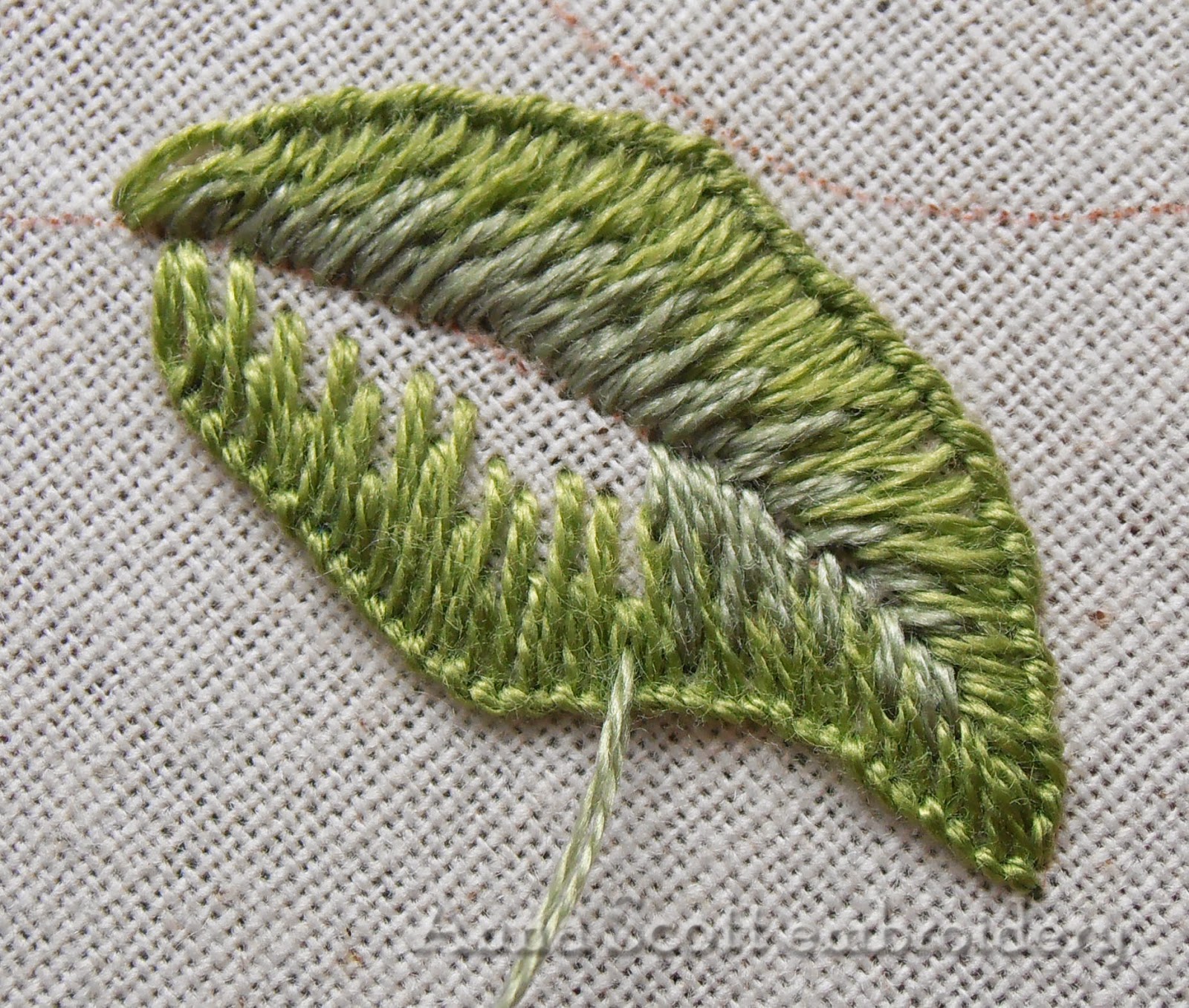
Finished with a fine centre vein and you have a beautiful shaded leaf.
I thought, I would see what happens if I placed the purl edge of the stitches along the centre vein instead - one mistake was to start at the base. It was really hard to get the angle of the stitches correct and the edges neat - but remember this is a sampler..

When stitching the remaining side, I started at the point - so much easier. The purl edges of the two sides meet along the centre and form a nice ridge.
I like the idea, I think. The outer edges could be neatened with another stitch or perhaps have a row of split stitch underneath to give them more definition.
For long, skinny leaves the blanket stitches can be placed across the full width. This is the type of leaf that sparked this whole little experiment. To be honest, I had not used the stitch this way before, but it certainly won't be the last. To neaten one edge, I place a row of split stitch underneath then work the blanket stitch over the top so that the purl edge is at the opposite side.

So this is how my little Blanket Stitch Tree turned out.
That was really good fun to play with just one stitch - have you started your?
Happy Stitching,
Anna




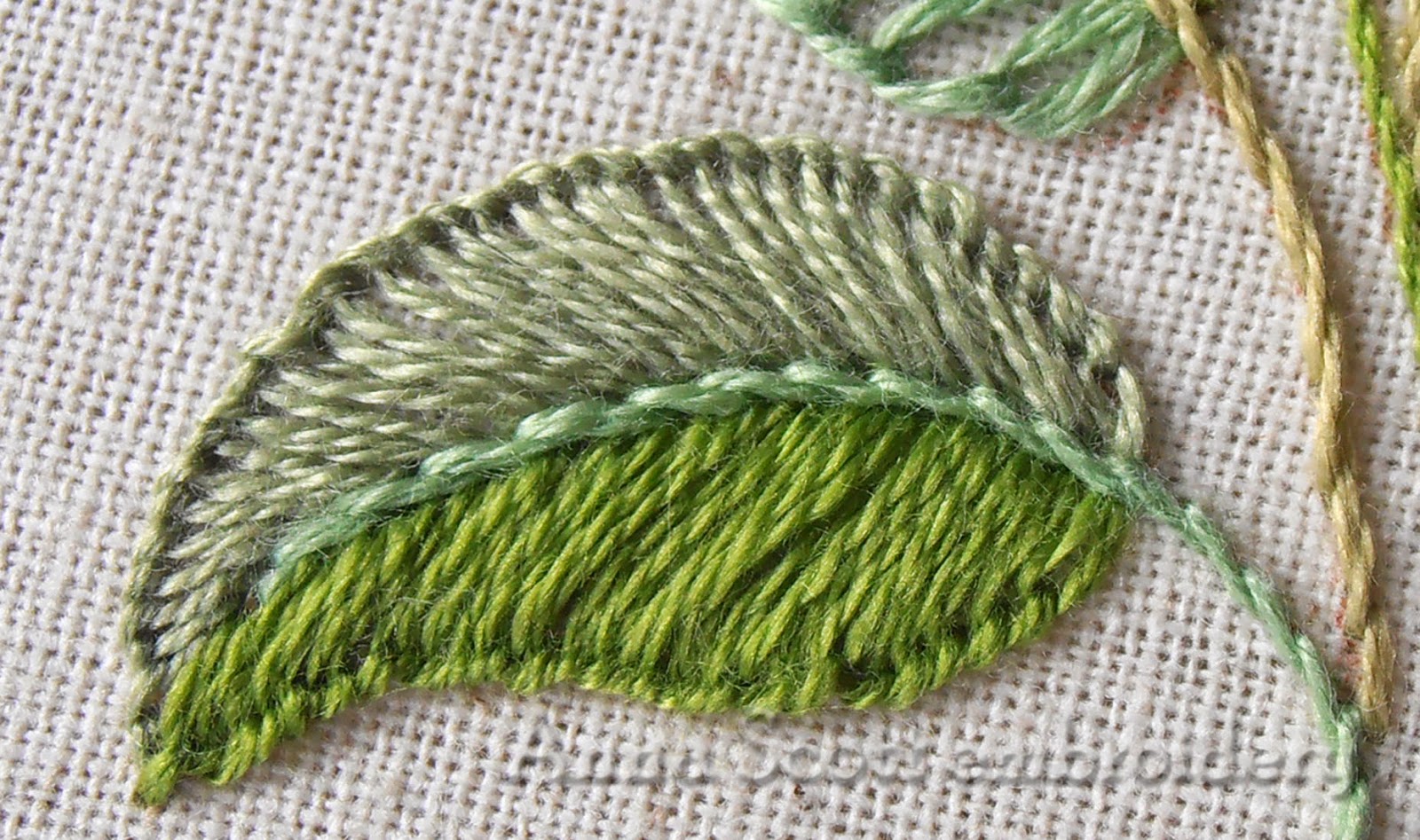

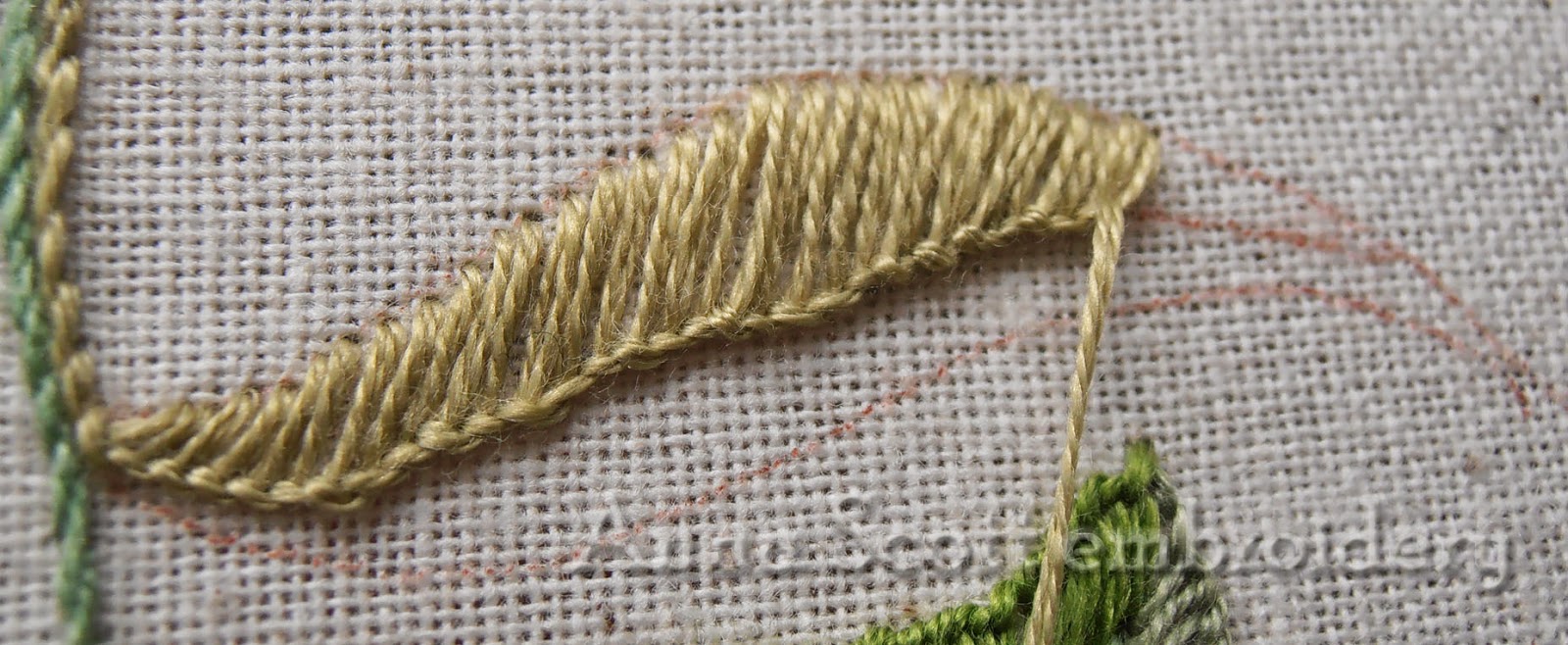

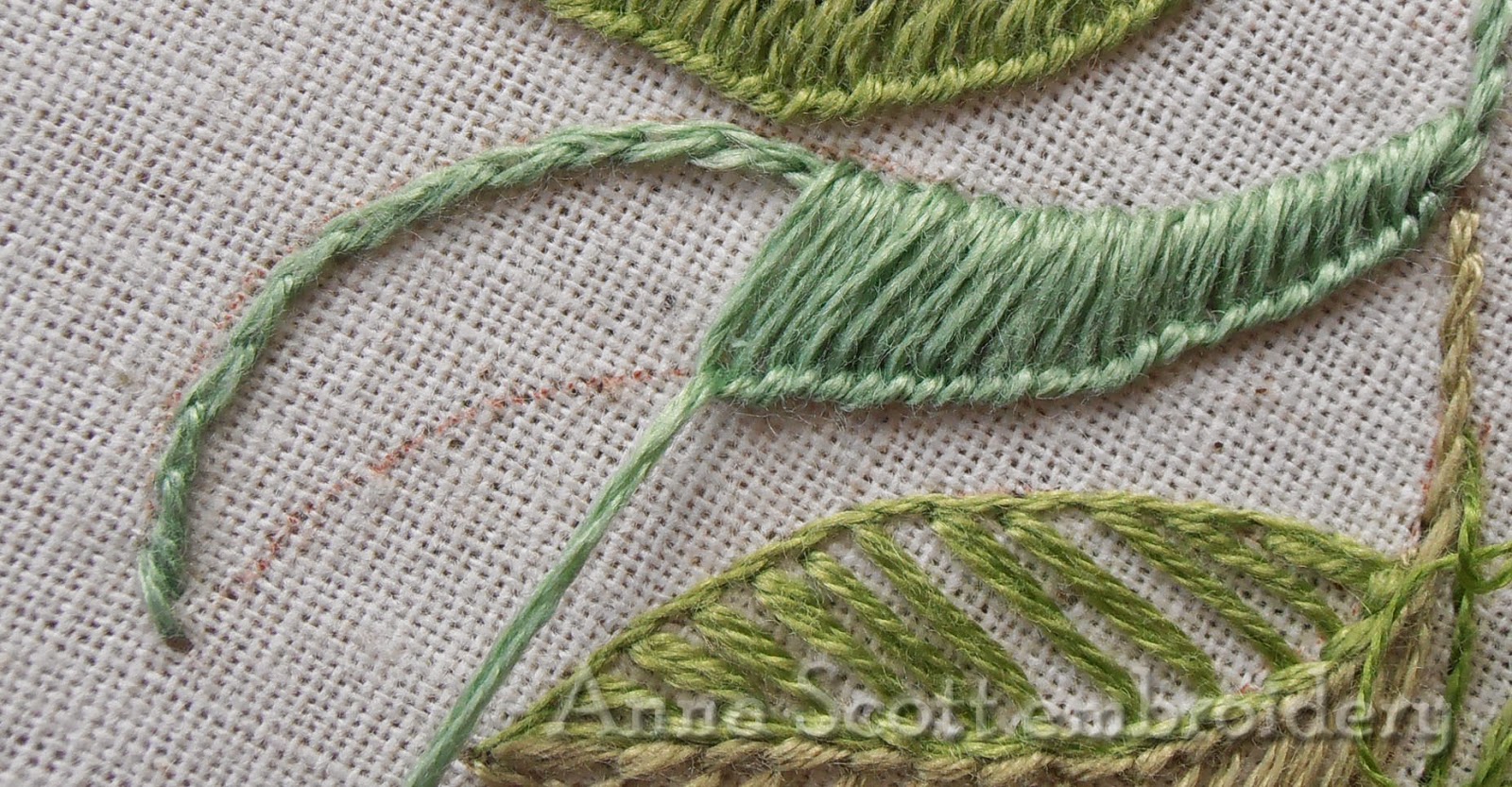
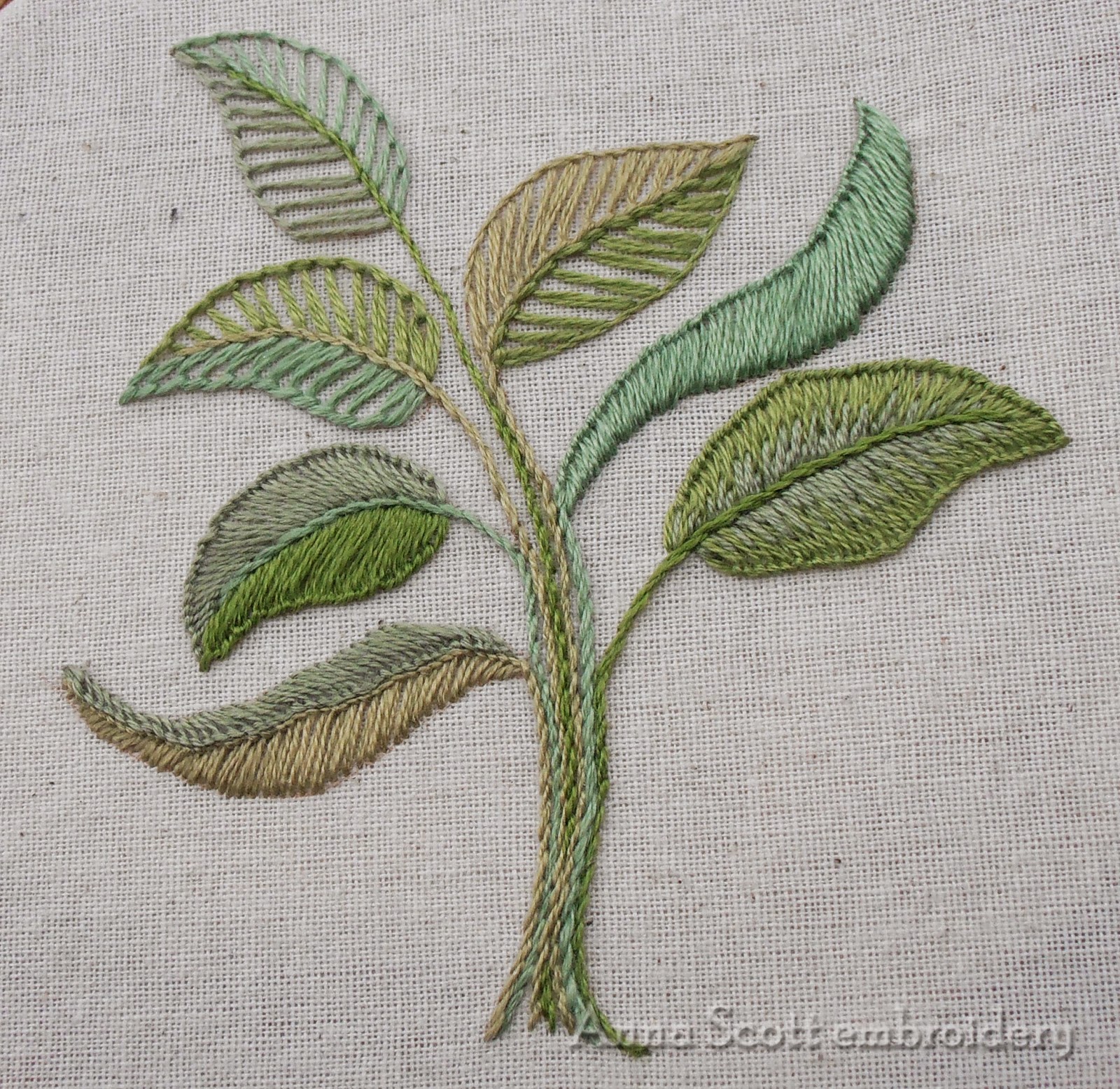

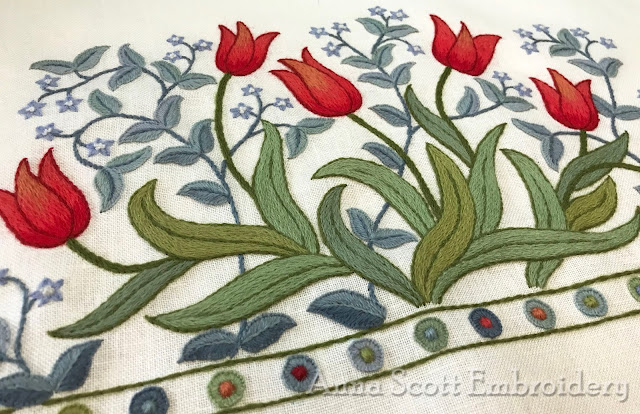
I love the look of this technique, I have bookmarked it so I can come back to it again. I certainly will be using it..thanks so much..
ReplyDeleteMuito lindo. Amei.
ReplyDeleteMe encanta tu trabajo!! Estoy intentando, me desespero porque todavía no soy muy hábil, pero me inaspira tu trabajo
ReplyDeleteAmei demais essa folha esse ponto...Como faz??? Como bordad???
ReplyDelete